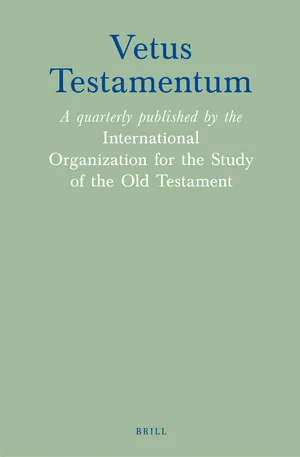https://doi.org/10.1163/15685330-00001121
출애굽기 3장 14-15절은 13절에 대한 모세의 질문에 답하고 있지만, 학자들은 놀랍게도 만장일치로 야훼(Yhwh)라는 이름이 야훼의 본래 성격을 결정하는 데 중요하다고 가정하며 14절을 이 단락의 핵심으로 결론지었다. 14절에 대한 이러한 집중은 대부분의 학자들이 15절 상반절이 질문에 대한 두 번째 답이며, 15절 하반절이 신의 두 가지 보완적이지만 뚜렷이 구별되는 차원을 제시한다는 사실을 간과하게 만들었다. 15절 하반절에서, 지시 대명사 וזה... זה, 명사 שמי(나의 이름), זכרי(나의 기념), 그리고 시간 부사구 לעלם(영원히), לדר דר(대대로)는 각각 야훼와 엘로힘이라는 두 개의 뚜렷한 지시 대상을 가리킨다. 첫 번째 절은 야훼 이름의 시간을 초월하는 본질을 강조하는 반면, 두 번째 절은 엘로힘을 조상과 미래 이스라엘 세대의 하나님으로 기념해야 할 필요성을 역설한다.
Exodus 3:14–15 provide an answer to Moses’ question in v. 13, but with surprising unanimity scholars have concluded that v. 14 is the heart of the section due to the supposed significance of the name Yhwh for the determining Yhwh’s original character. This focus on v. 14 has led most scholars to overlook the fact that v. 15a is a second answer to the question, and that v. 15b presents two complementary, but distinct dimensions of the deity. In v. 15b, the demonstratives וזה … זה, the nouns שמי and זכרי, and the temporal adverbial compounds לעלם and לדר דר, each point toward two distinct referents: Yhwh and Elohim. The first clause highlights the timeless nature of Yhwh’s name, while the second clause underscores the need to memorialize Elohim as the God of the ancestors and future Israelite generations.






